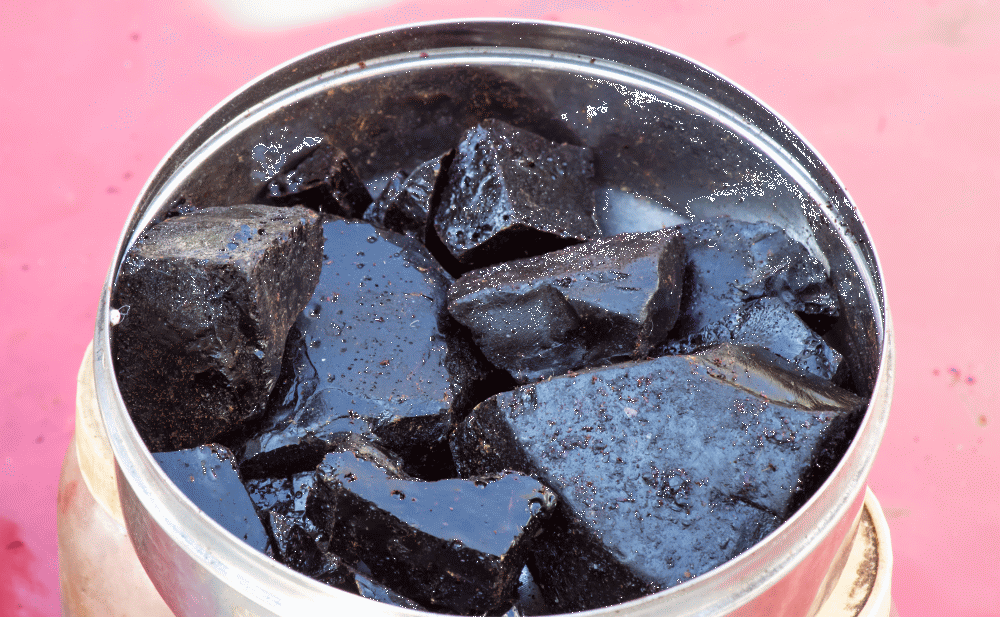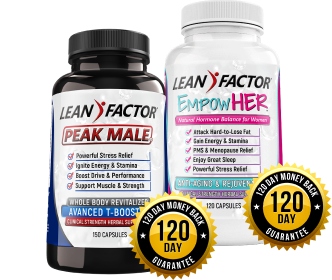Description
Ingredients
Shilajit is a “herbo-mineral” that flows from the high mountain rocks of the Himalayas in the heat of summer.
Once a well-kept secret among the hill tribes of India, Shilajit has been used in Ayurvedic medicine for thousands of years as a rejuvenator and an anti-aging compound.
Despite its somewhat off-putting blackish-brownish tar appearance, Shilajit has been cherished for generations for its amazing health properties such as:
- Improving brain function
- Providing cardiovascular protection
- Reducing stress and anxiety
- Managing symptoms of chronic fatigue syndrome
- Promoting anti-aging
Shilajit (salajit, mimie or mummiyo) is a natural substance formed over centuries by the gradual decomposition of plants -- which is probably why it's also known as “vegetable asphalt”.
Traditionally, Shilajit was consumed by the people of Nepal and North India as part of their daily diet to offset the effects of aging and increase strength. It was also used to treat digestive disorders, nervous disorders, and breathing problems.
Because of the complex and eclectic nature of its active compound, shilajit acts as a rejuvenator, antioxidant, and adaptogen. It's no wonder the mineral-rich biomass was once hailed as a "miraculous gift of God!" Its properties have been known to heal many illnesses making the herbo-mineral an essential remedy in many systems of traditional medicine.
Due to Its Remarkable Benefits, Shilajit Is Still In Use In The Modern Age
In the past several decades, this gooey mineral resin has been shown to be effective against a wide range of diseases, including heart disease and anemia (Joukar et al., 2014). Today, shilajit is used as a dietary supplement for strength, energy, recovery, endurance, and a robust immune system.
As a powerful herbo-mineral adaptogen, studies have shown that shilajit:
1. Slows the progression of Alzheimer’s disease
Shilajit is rich in fulvic acid, an antioxidant that promotes cognitive health by preventing the buildup of tau proteins that accelerate brain ailments. It restores energetic balance and improves mental stimulation helping to control age-associated cognitive disorders, such as Alzheimer's disease. (Carrasco-Gallardo, et al., 2012).
2. Provides anti-aging benefits
Shilajit has potent antioxidant and anti-inflammatory properties. Due to this, it protects against free radicals, which have been linked to cellular damage. Regular use of shilajit can slow the aging process and promote longevity (Agarwal et al., 2007)
3. Controls iron deficiency anemia
Shilajit is rich in iron and contains more than 84 minerals. As a result, it can be used to correct iron deficiency anemia by supplementing and gradually increasing blood iron levels. It also alleviates the symptoms of iron deficiency anemia, including fatigue, weakness, headaches, and irregular heartbeat (Velmurugan et al., 2012).
Shilajit also offers other health benefits, such as:
- Improved muscle strength
- Improved cellular function
- increased energy levels
- Improved heart health
- Increased testosterone levels in males
- Alleviation of anxiety
- Help to overcome altitude sickness
- Protection against oxidative stress
- Help in fighting obesity
Shilajit: One of Nature’s Most Powerful Substances
In ancient times shilajit was combined with milk for easy consumption. Now, it’s available in liquid, capsule, and powder forms, making it easy to incorporate into your diet. A word of caution: always administer it according to instruction. And because shilajit is a powerful adaptogen, it’s best consumed along with other adaptogens. Research has shown that adaptogens are more effective when combined.
Shilajit is a unique adaptogen herb powered by minerals used for anti-aging and longevity
Shilajit is a unique adaptogen herb called an "herbomineral". It is blackish-brown in color and composed of a gummy substance that oozes from the rocks of the Himalayas. Shilajit is composed of humus, organic plant materials and fulvic acid.
Shilajit delivers powerful minerals and nutrients deep into tissues and helps overcome tiredness, lethargy, and chronic fatigue.
Shilajit is especially well-known for improving one's ability to handle stresses on the body coming from high altitudes and boosting the immune system. Often taken by people traveling to high altitudes because of its ability to act as a “health rejuvenator”, Shilajit is useful in helping to overcome high-altitude sickness. (Meena, 2010)
References
Ghosal, Lal, Singh, et al., "The need for formulation of shilajit by its isolated active constituents."
Agarwal, S.P., et al., "Shilajit: A review," Phytotherapy Research 21(5) (2007): 401–5.
Bhaumik, Chattopadhyay, and Ghosal, "Effect of shilajit on mouse peritoneal macrophages."
Pandit S, Biswas S, Jana U, De RK, Mukhopadhyay SC, Biswas TK. Clinical evaluation of purified Shilajit on testosterone levels in healthy volunteers. Andrologia. 2015;48(5):570-575.
Carrasco-Gallardo, et al. "Shilajit: a natural Phyto complex with potential procognitive activity." International Journal of Alzheimer’s disease 2012 (2012).
Wilson, Eugene, et al. "Review on shilajit used in traditional Indian medicine." Journal of ethnopharmacology 136.1 (2011): 1-9.
Velmurugan, C., Vivek, B., Wilson, E., Bharathi, T., & Sundaram, T. (2012). Evaluation of safety profile of black shilajit after 91 days repeated administration in rats. Asian Pacific journal of tropical biomedicine, 2(3), 210-214.
Meena H, Pandey H, Arya M, Ahmed Z. Shilajit: A panacea for high-altitude problems. International Journal of Ayurveda Research. 2010;1(1):37. doi:10.4103/0974-7788.59942
Joukar S, Najafipour H, Dabiri S, Sheibani M, Sharokhi N. Cardioprotective Effect of Mumie (Shilajit) on Experimentally Induced Myocardial Injury. Cardiovascular Toxicology. 2014;14(3):214-221.
Das A, Datta S, Rhea B, et al. The Human Skeletal Muscle Transcriptome in Response to Oral Shilajit Supplementation. Journal of Medicinal Food. 2016;19(7):701-709. doi:10.1089/jmf.2016.0010.
Meena, Harsahay, Shilajit: A panacea for high-altitude problems. International Journal of Ayurvedic Research. 2010. https://www.ncbi.nlm.nih.gov/pmc/articles/PMC2876922/.
Shilajit, often referred to as the 'Destroyer of Weakness,' is a potent adaptogen with a history of traditional use in enhancing vitality and well-being. This comprehensive guide offers an in-depth look into the adaptogenic and bioactive compounds found in Shilajit and how they contribute to improved energy levels, mental clarity, and overall vitality. By understanding the mechanisms by which Shilajit acts on cellular and metabolic pathways, you can equip yourself with the knowledge to integrate this ancient herb into your wellness strategy, potentially improving various aspects of your health.
Excerpt
Shilajit, often referred to as the 'Destroyer of Weakness,' is a potent adaptogen with a history of traditional use in enhancing vitality and well-being. This comprehensive guide offers an in-depth look into the adaptogenic and bioactive compounds found in Shilajit and how they contribute to improved energy levels, mental clarity, and overall vitality. By understanding the mechanisms by which Shilajit acts on cellular and metabolic pathways, you can equip yourself with the knowledge to integrate this ancient herb into your wellness strategy, potentially improving various aspects of your health.













